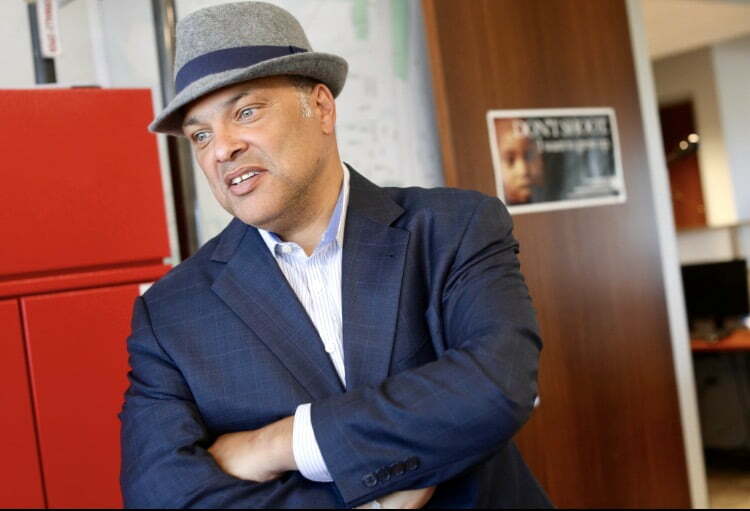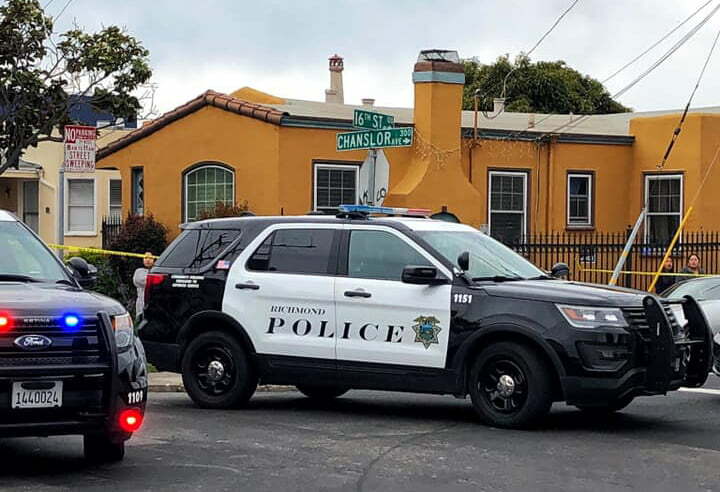
DeVone Boggan, author of the Peacemaker Fellowship
How do you evaluate recent research that proves in Richmond the impact of Peacemaker Fellowship but at the same time points out that one of its possible consequences could be an increase in other crimes?
I haven’t given it much attention. First, the Peacemaker Fellowship (formerly known as “Operation Peacemaker”) was created to and is specifically designed to reduce cyclical and retaliatory gun violence, period. While I served as Neighborhood Safety Director, and Director of the city’s Office of Neighborhood Safety, my responsibility was to reduce gun violence. I wasn’t focused on other crimes. I and my team had a very specific mission: reduce firearm assaults and associated injury and death. That is what we were asked to do, and we did it.
I can tell you with certainty however, that the “other” crimes spoken about in that research weren’t committed by those who were involved in our Fellowship (i.e., lethal firearm offenders didn’t put their guns down and pick up knives).
How to achieve the sustainability of promising results in Richmond?
Today, Richmond celebrates a 82% reduction in gun violence causing injury or death (between 2007-19 since we arrived). Leadership: This accomplishment required bold leadership from our City Manager, Mayor and City Council to do something dramatically different. Our effort in Richmond was the first of its kind in the country. So, these leaders were pioneers on this front. Investment: The city committed to making a long-term financial investment in the effort (10 years minimum). We will celebrate 13 years in October 2020. Strategy: The city made a long-term commitment to the strategy (Office of Neighborhood Safety and the Peacemaker Fellowship). The city was the first city in the country to create and incorporate a non-law enforcement agency and strategy designed solely to reduce gun violence inside of the City government. Richmond was the first city in the USA to hire (as full-time city employees) formerly incarcerated residents with firearm charges in their background. Focused-Engagement and Investment in the most impacted population: The city allowed us to focus on and make developmental healing centered investments into those most responsible for gun violence (the 70% of those who had avoided the reach of law enforcement). Concentrated focus and relationship driven outreach, services, support and opportunity directed at those few who are at the center of gun violence was and is key to delivering optimal outcomes and sustainable promising results. Evaluation: It is important to establish a well-informed evaluation platform early on. Evaluation helps in learning and improving process, data collection and assessment, and determining the ffectiveness and value of the strategy.
What are the results of Peacemaker Fellowship in other American cities?
Very Promising. Here are two examples: City of Sacramento Impact 2019. City of Stockton Impact 2019 Here is the 2-year Sacramento Evaluation (2018-2019)
See Page 10:
Benefit Cost Analysis: Benefit-cost ratio (BCR) is a measure of return on investment. BCR compares the costs of an intervention to its benefits, including program participants and taxpayers.
If the BCR is greater than 1, the benefits of the intervention exceeded its costs. For example, a BCR of $5 represents $5 of benefits accrued for every $1 spent on an intervention.
The benefits of the Advance Peace Sacramento intervention were calculated by first using the cost estimates of the cost of gun shooting injuries and homicides from the Giffords Law Center to Prevent Gun Violence and the Public Policy Institute (PPI) of California. According to these estimates, a gun assault with an injury costs the City of Sacramento approximately $435,000 while a gun homicide costs about $1 Million dollars. These costs include the emergency response, law enforcement, health care, criminal investigation and prosecution, jail and, in the case of a homicide, the loss of tax dollars from a working adult. These data are consistent with estimates from other California places and national data.
Second, using our NCA data and interviews, we determined that the Advance Peace Sacramento program intervened to stop 58 cyclical and retaliatory gun incidents over the two-year period. These were incidents in the streets where guns were present and NCAs actively interrupted. If all these 58 incidents would have resulted in shootings with an injury, the costs would have been about $25.2 Million. If the 58 incidents were gun homicides, the costs would have been about $58 Million. Thus, we determined that the benefits of AP Sacramento were between $25.2 to $58 Million over the two-year period.
Third, we received data from Advance Peace that the two-year total cost of the program was $1,384,836. Finally, we calculated the BCR by dividing the estimated benefits by the costs: $25.2M/$1,384,836 and $58M/$1,384,836. We did not use a discount rate. The BCR for Advance Peace Sacramento for 2018-2019 was $18.20 – $41.88: $1. This means that for every dollar the city spent on Advance Peace, they received between $18-$41 dollars in return.

What does it depend on whether Peacemaker Fellowship can be successfully applied to different types of crime and in various cities or states?
The user or implementers:
- Understanding the nature of the crime;
- Successful identification of the drivers of the crime;
- Sole Focus on the right people-those at the center of the crime (i.e., those driving the crime);
- Adequate understanding of the motivations/what motivates those that drive the crime/offenders of the crimes;
- Making developmental and Healing-centered investments;
- Hiring quality and qualified staff (those with a common-lived experience of the offenders of said crime);
- Hiring adequate number of staff (low staff to client ratios is important);
- Making long-term commitment (no less than 10-years) to the strategy;
- Making long-term funding commitment to the strategy;
- Where possible, police involvement should be very limited;
What is the most effective tool/success factor/measure to reduce homicides and how can we measure their impact?
After verifying that you are engaging/serving the right individuals (those at the center of the violence that causes injury and homicides) – measure these during and after strategy implementation:
- What percent of likely offenders are alive;
- What percent haven’t been injured by the crime;
- What percent aren’t a suspect in a new crime since they enrolled in strategy;
- Community Safety impacts: reductions in crime, people feel safer;
- Shooting rates (increase/decrease);
- Homicide by firearm rates (increase/decrease);
- Benefit-Cost Ratio
See impact statements above Q3
What do you think about Focused Deterrence as a tool to reduce domestic violence or homicides?
I’m not sure.
I think language is important. Focused Deterrence sounds like policing or a strategy with punitive grounding – it communicates to the offender that as a result of their action that he/she is a deficit or criminal. The offender will feel this sentiment. Now, Focused Engagement is about the development of protective relationships and daily investments of support, services and opportunities. It communicates to the offender that he/she is an asset and important to his/her healing and their communities healing process. The offender will feel this sentiment.
Is the current legislation on gun control sufficient or should be changed?
I haven’t seen any proposed legislation that would stop or limit illegal firearms from entering poor/marginalized black and brown communities.
(Interview with Jan Maloch, PIQASO)


